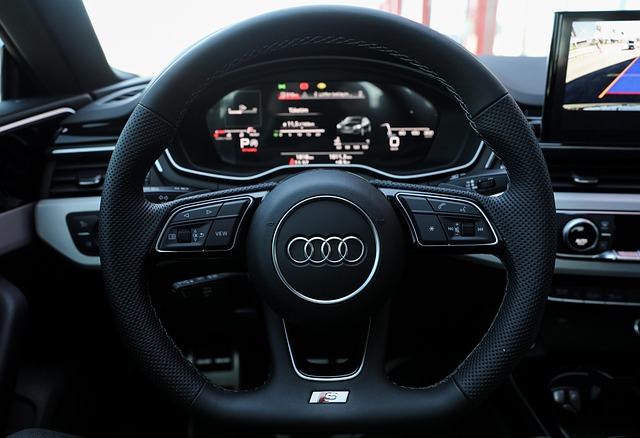Looking to register your car in California? This comprehensive guide breaks down the process, from understanding key requirements to common mistakes to avoid. We explore the importance of a valid VIN (Vehicle Identification Number) verifier, ensuring accuracy and a smooth registration experience. Gather essential documents, follow our step-by-step instructions, and discover tips to make the registration process efficient and hassle-free in the Golden State.
- Understanding California Car Registration Requirements
- Gather Necessary Documents for Car Registration
- How to Verify Vehicle Identity (VIN) for Accuracy
- Step-by-Step Guide to Registering Your Car in CA
- Common Mistakes to Avoid During Car Registration
Understanding California Car Registration Requirements

In California, registering a car involves understanding several key requirements set by the Department of Motor Vehicles (DMV). One crucial aspect is ensuring the vehicle’s Vehicle Identification Number (VIN) is accurately verified. A VIN verifier, whether used on-site at a DMV office or through a mobile vin verifier service, plays a vital role in this process. This tool checks the vehicle’s history, including any prior accidents or outstanding issues, to confirm its authenticity and condition.
Additionally, when registering, owners must provide current registration fees, pass a smog test (in some areas), and present necessary documentation like proof of insurance and identification. For those considering a mobile vin inspection or mobile vin verification service, it’s essential to choose reputable providers who can offer accurate, up-to-date information, streamlining the registration process while maintaining compliance with California’s strict vehicle registration standards.
Gather Necessary Documents for Car Registration

Before diving into the registration process, it’s crucial to gather all the essential documents required by the California Department of Motor Vehicles (DMV). This includes your vehicle’s Registration Application (Form DVF 140), which can be obtained online or in person. One critical document is the Vehicle Identification Number (VIN) verifier, ensuring your car’s unique identifier is accurate and valid.
Additionally, you’ll need proof of insurance, a current vehicle inspection report (or a completed mobile VIN inspection if accessing this service on your phone), and identification documents such as a driver’s license or state-issued ID card. It’s also helpful to have the purchase agreement or title for the vehicle handy, along with any applicable fees to cover registration costs.
How to Verify Vehicle Identity (VIN) for Accuracy

To ensure the accuracy of your vehicle’s identity, or VIN (Vehicle Identification Number), it’s crucial to verify its authenticity before proceeding with registration. Start by obtaining a clear, legible copy of your car’s VIN from reliable sources like the vehicle’s title document or manufacturer’s certificate. Next, use a trusted vin verifier to cross-reference and confirm its validity. Many online tools and mobile vin inspection apps are readily available for this purpose. These services compare your provided VIN with databases to ensure it matches a genuine, registered vehicle in California.
Incorrect or tampered VINs can lead to registration issues and potential safety hazards, so take the time to double-check. A correct VIN is essential, as it allows the DMV (Department of Motor Vehicles) to accurately identify your vehicle during the registration process, ensuring a smooth and successful transaction.
Step-by-Step Guide to Registering Your Car in CA

Registering a car in California involves several steps to ensure your vehicle is legally operable on state roads. Here’s a step-by-step guide to help you navigate through the process smoothly. First, gather all necessary documents like proof of ownership, insurance, and identification. Then, visit the California Department of Motor Vehicles (DMV) website to determine if your vehicle requires an inspection. If required, schedule a mobile vin inspection or use a mobile vin verifier to ensure your car meets safety standards.
Next, fill out a Vehicle Registration Application form, available both online and in-person at any DMV field office. Provide your unique vehicle identification number (VIN) for verification purposes. After submitting the application and necessary fees, you’ll receive your registration certificate along with a license plate. Ensure these are displayed correctly on your vehicle to avoid fines or legal issues while driving.
Common Mistakes to Avoid During Car Registration

When navigating the process of registering your car in California, it’s easy to make mistakes that can delay or even prevent completion. Common blunders include forgetting essential documents like proof of insurance and registration fees, as well as misinterpreting important requirements such as the need for a vehicle inspection or accurate odometer readings.
Another critical area to avoid pitfalls is ensuring your Vehicle Identification Number (VIN) is verified accurately. Using a mobile VIN verifier can help in this process by providing immediate feedback on the vehicle’s history and potential issues, preventing you from encountering problems later. Remember, a thorough understanding of the requirements and meticulous attention to detail will streamline the registration process, saving you time and effort.
Registering a car in California involves understanding specific requirements and gathering essential documents. By verifying your vehicle’s identity using a reliable VIN verifier, you can ensure accuracy throughout the process. Following our step-by-step guide and avoiding common mistakes will make registering your car in CA a seamless experience. Remember to keep all necessary paperwork organized for future reference.
